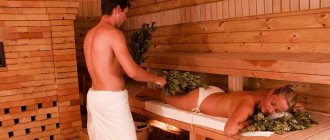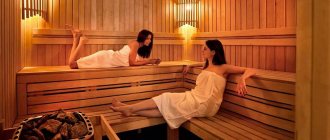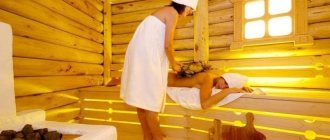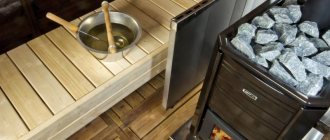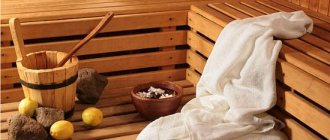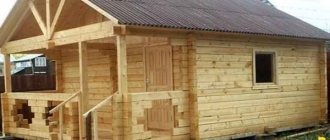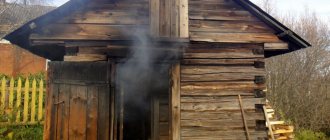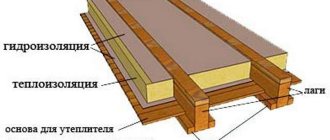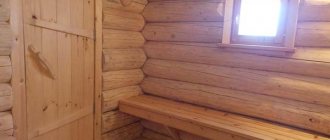Oil wax Bath SAUNA. Natural impregnation for treatment inside baths and saunas.
| Oil wax for wooden surfaces in BATH and SAUNA. Safe in contact with skin. | Pigment | |||||
| container 2.5l 3350 rub. | container 5.0l 6550 rub. | |||||
container 0.1 kg 550 rub.
PURPOSE Oil wax Anta BATH SAUNA
Oil wax Bath SAUNA is manufactured and used as an environmental bioprotection of baths and saunas, moisture protection and THERMAL protection of wooden surfaces made of wood in steam rooms, steam rooms, washrooms, baths, saunas, rooms with open water, and near swimming pools. Protects the external and internal walls of log houses or bathhouses, protects log walls, steam rooms, steam rooms in Russian baths, Finnish saunas, washing rooms with high humidity and open water, rooms with high humidity and variable temperatures and sudden changes in temperature from mold and mildew. over large ranges and in a short period of time. Sauna oil wax protects against moisture and biological damage, various mold fungi, mildew, blue stains and darkening of wood on walls, ceilings and floors. It is used for treating canopies in steam rooms, in places where parts of the human body come into contact with interior items in a sauna and bathhouse.
DIFFERENCES Oil wax Bath Sauna
Maslovosk-Sauna, Maslovosk Bath is designed to protect all wooden structures and interiors in saunas, baths, washrooms, steam rooms, rooms with high humidity and high operating temperatures. The Maslovosk BATH SAUNA modification is created on the basis of the basic composition of Maslovosk STANDARD with the introduction of additional additives of resins and oils intended for high-quality operation of the oil wax in rooms with elevated temperatures and high humidity compared to Maslovosk Standard. Additionally, the composition of this Oil wax is enhanced by the content of propolis. Ideal for protecting shelves in steam rooms, benches in bathhouses, and places in contact with the human body, because does not cause allergies. Oil wax BANYA Sauna contains only natural ingredients. Oil wax for sauna is odorless and does not emit harmful substances when heated and at high operating temperatures. Bath oil wax can be used for food utensils made of wood and WOODEN BATH FURNITURE for WASHING, TUBES, buckets, scoops, BARRELS, bowls, etc.
Bathhouse No. 2 House of rest and creativity of artists Senezh.
Since ancient times, our ancestors believed in the healing and cleansing power of baths (the origin of the Russian bath) and associated health with cleanliness. The bathhouse has always been considered the best way to overcome illness, the evil eye and everything bad in general. Over time, the offer to take a bath in the bathhouse became a sign of hospitality. So, the guest was first taken to the bathhouse and only then fed and put to bed.
By the way, it would be wrong to associate the steam bath only with the Slavs. In fact, such baths appeared for the first time among many peoples of the Volga region, the Urals and Siberia - not only among the Slavic tribes (the history of the bath), but also among the Finnish, Ugric and others. For example, in the taiga, hunters’ huts built on the principle of baths have survived to this day. During the Great Migration, some Finnish peoples took the black steam bath to Scandinavia and Europe. It is believed that the ancient Indian temsual baths, in which people still steam with brooms made of corn stalks and medicinal herbs, were brought to America by Siberian tribes.
The baths were so important for our ancestors that even in the treaty with Byzantium in 907 it was specifically stipulated that Russian ambassadors in Constantinople could visit the baths at any time (the emergence of the Russian bath). A description of the bathhouse is found in the Tale of Bygone Years and foreign chronicles. Russian baths surprised most foreigners. They were especially amazed by how the Russians steamed in the bathhouse, dousing themselves with kvass or ice water and beating each other with a broom. Foreign travelers even considered steaming in the baths a voluntary torment, torture. They were very afraid of steaming, but after visiting the Russian bathhouse, the strangers felt great. The impressions from the Russian baths were so strong that rumors about the healing effects of Russian baths spread throughout the world.
Meanwhile, the healing effect of the bath was known to the ancient Greeks. Our monks, having studied many of the works of the ancient Greeks, decided to check what effect the bath actually has on the sick. These observations confirmed that the bath procedure is an excellent cure for many diseases. Hospitals of sorts began to appear around the bathhouses.
Many European and Asian travelers wrote about Russian baths (history of the Russian bath). The foreigners themselves were accustomed to washing in baths with warm water, so when they saw how the Russians, hot after the bath, dived into an ice hole or wiped themselves with snow, the foreigners were horrified. After such a spectacle, the Russians seemed to them to be real heroes.
In ancient times, Russian baths were a small wooden log house with a single window located under the ceiling. The cracks between the logs were usually caulked with tree resin and moss. In the corner there was a large stove-stove, in which a fire is lit, which heats the bathhouse itself and heats the stones placed on top of the stove. There was also a barrel or vat of water in the bathhouse. When the stones became hot, the fire was extinguished, and the hot stones were watered. At the same time, the doors and windows were tightly closed and they steamed, sitting or lying on the shelves. Only hardy and experienced steamers can steam on the top shelf, as the temperature there can reach 100 degrees. As a rule, baths were placed near reservoirs. In winter, after a bath, people ran naked into the street and dived into an ice hole or wiped themselves with snow like a washcloth. In the summer, after the bath, they simply doused themselves with cold water or jumped into a pond.
The first baths were built exclusively from logs. Only one of the chronicles of 1090 mentioned a brick bathhouse built in Pereslavl.
Any person who had enough land for this could build a bathhouse. In the mid-17th century, a decree was even issued, according to which baths were allowed to be built only at a distance from residential buildings, apparently to avoid fire. Traditionally, baths were heated on Saturdays, so Saturdays were called bath days; even public places were closed. The whole family washed themselves in home baths, both men and women steamed together, without any embarrassment. Public baths differed only in that women washed in one half, and men in the other. Only in 1743 it became prohibited in public baths for men over 7 years of age to enter the women's bathhouse, and for women to enter the men's bathhouse.
It is worth noting that in ancient times people went to the bathhouse not just to wash, but to warm up their bodies and sweat. Warming up is useful for calming the nervous system; in addition, steaming and warming up in a bathhouse increases mental abilities. The Portuguese physician of Empress Elizabeth Petrovna Sanchez (1778) wrote about the healing properties of the Russian bath. He believed that the Russian bath could well replace almost all medications. When Sanchez left Russia, he promoted the opening of Russian steam baths in major European cities.
The spread of Russian baths in Europe was also facilitated by Peter I, who ordered the construction of baths for his soldiers in Paris and Amsterdam during his stay there. And after the war with Napoleon, soldiers of the Russian army built baths in all the liberated countries and taught the local population how to “bath”.
An ancient treatise described 10 benefits of the bath: clarity of mind, freshness, vigor, health, strength, beauty, youth, cleanliness, pleasant skin color and the attention of beautiful women.
At the beginning of the 19th century, there were already 1,500 private and 70 state baths in Moscow. At the beginning of the 20th century, every hospital and clinic had a steam bath, which was prescribed to patients suffering from rheumatism, gout, dropsy, obesity, etc.
Nowadays, Russian steam baths are very popular outside our country. The healing effect and beneficial properties of the Russian bath are generally recognized today.
Holidays in the Moscow region:
- Holiday home in the Moscow region on Lake Senezh
- Rest on Senezh
- Outdoor wedding
- Inexpensive holidays in the Moscow region
- Autumn wedding
- Holidays on the lake
- History of the house of creativity and recreation for artists "Senezh"
- Directions to the holiday home
- Historical photographs
- Photo gallery of the holiday home
- Poems about Senezh and the surrounding area of the lake
- Contact information, telephone numbers
Vacationers at the Senezh Artists' Recreation and Creativity House have the following services at their disposal:
- rest house Senezh comfortable rooms with lake views;
- holiday cottages on the shore of Lake Senezh;
- hold a banquet outdoors on the shore of the lake;
- Russian bath (for 6 people), sauna in the Moscow region;
- volleyball court, table tennis, Russian billiards;
- cycling in beautiful places of the Moscow region;
- horseback riding, horseback riding;
- an ancient park (a monument of landscape architecture), the park is directly adjacent to forest lands - a haven for berry and mushroom pickers;
- areas for preparing barbecue (it is possible to take a barbecue with skewers, charcoal for the barbecue and a lighting mixture);
- equipped modern conference room for 40 people;
- hold a banquet outdoors on the shore of the lake;
- a small dining room for 50 people, a cafe-bar with a disco;
- holding a wedding celebration in a banquet hall for 120 people;
- library;
- Gym;
- relaxation on the beach on the shore of Lake Senezh, comfortable conditions, boat rental;
- In winter there is a skating rink, ski, sleigh, and skate rentals;
- We offer excursions around Moscow;
- Internal guarded parking.
Oil wax BATH SAUNA
Oil wax BATH SAUNA is designed as an environmental bioprotection, moisture protection and THERMAL protection for wooden surfaces. Helps protect the internal walls of log houses and baths, internal walls made of logs, steam rooms, steam rooms of Russian baths, saunas, washing rooms, rooms with high humidity and unstable temperatures or sudden temperature changes in a short period of time from moisture and biological damage, mold, blue stains, darkening of the wood of walls, ceilings or floors, as well as steam room canopies in places where open areas of the human body come into contact with household items and the interior of a sauna or bathhouse.
Oil wax BATH SAUNA is intended for:
- imparting bioprotective, moisture-repellent, antiseptic properties to wood in a steam room or in rooms with high operating temperatures and high humidity,
- protection of walls, ceilings, floors, canopies and benches in the steam room, bathhouse or sauna,
- protecting wooden structures of various wooden buildings and obtaining bioprotective properties,
- imparting moisture protection properties to wood at high temperatures,
- PREVENTS LOG CRACKING by leveling the density of the wood over the entire surface, leaving the log wood vapor-permeable (“breathable”),
- evenly distributes and regulates the release of excess moisture from the log,
- facilitating the proper drying of logs or beams during the operation of the steam room or washing compartment in the bathhouse,
- preserving the original natural color of the wood,
- giving an antistatic effect to wooden surfaces.
Oil wax BATH SAUNA does not cause allergies and is indicated for use to protect wooden surfaces where people prone to allergies may live (except for those with allergies to pine and fir resin - which is very rare)
Oil wax BATH SAUNA contains:
- only real natural ingredients,
- linseed oils produced in the Central and North-Western regions of Russia,
- natural BEE WAX, collected from apiaries of the Republic of BASHKIRIA,
- fir oil esters,
- natural pine resins and oils,
- a complex of natural resins and esters for work in rooms with temperatures up to 150C,
- increased content of natural beeswax and the presence of propolis.

